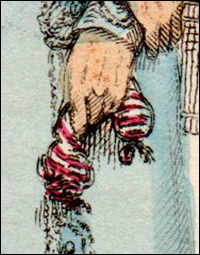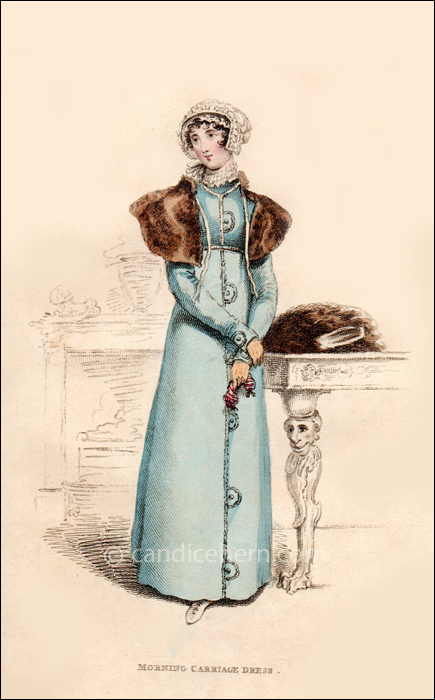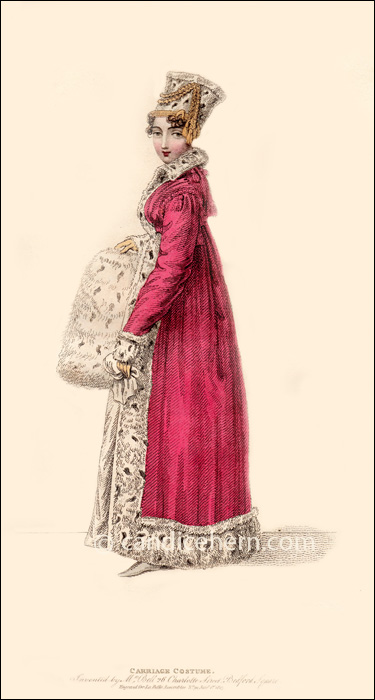La Belle Assemblée, January 1814.
This issue of the magazine talks about the extremely cold weather, and here is a costume to combat the cold: a full-length pelisse, a fur tippet (or stole), and a fur muff.
The distinction between a carriage dress and a walking dress is never very clear in the magazines of this period. One can assume that the carriage costume is meant for more than a short drive, but is comfortable enough for a longer trip.
The print is described in the magazine as follows:
“Pelisse of the fashionable blue cloth, fastened down the front with small flaps, edged with silk trimming to correspond, in a manner that is perfectly novel, and that has a very elegant effect; the cuff is also ornamented to correspond. A very small cottage bonnet, composed of white satin, and of a most becoming and novel shape; the front, which is very small, displays a rich quilling of lace to correspond with the triple lace ruff. The bonnet on one side comes down in a square end, and the front is ornamented with white satin ribband, which is disposed as to have the appearance of a small wreath of white flowers; a white soft ribband ties it in a very full bow under the chin. Cloth half-boots to correspond with the dress. York tan gloves, and a seal-skin muff and tippet, finishes this dress.”
In the subsequent section on “General Observations on Fashion and Dress,” after bemoaning the severe winter weather for precluding much change in fashion, a bit more about this type of pelisse is mentioned:
“In the carriage costume there is rather more variety; pelisses are very general, the form most in request we have given in our Plate, but they are also generally trimmed with swansdown, ermine, and also chenille, which is very much worn, as is also embroidery.”
Please note the purse held by the model, as seen in this detail of the print. This is a miser purse, which you can read more about on this website in the Regency World article on miser purses.








